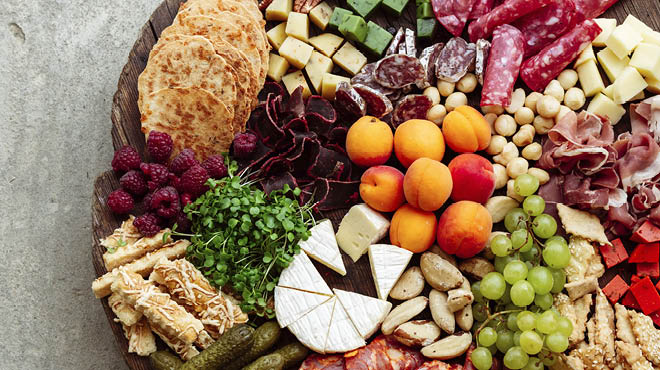Recent Posts
-

-
 Patient StoriesA lifesaver saved: An EMS veteran’s journey from rescue to recoveryNovember 14, 2025
Patient StoriesA lifesaver saved: An EMS veteran’s journey from rescue to recoveryNovember 14, 2025 -

What you should know about processed, ultra-processed foods

Processed, and especially ultra-processed, foods have been blamed for the national rise in obesity, high blood pressure and diabetes. But what exactly are these foods, and are they really all that bad for you?
Defining processed foods
According to the Department of Agriculture, processed foods are any raw agricultural commodities altered from their original state. This includes washing, cleaning, milling, cutting, chopping, heating, pasteurizing, blanching, cooking, canning, freezing, drying, dehydrating, mixing or packaging.
While processing includes basic steps like washing, foods cross into ultra-processed territory when they contain preservatives, flavorings and other food additives, or substances approved for use in food products, such as salt, sugars and fats used to enhance flavor and increase shelf life.
Ranking foods from minimally to ultra-processed
Here's how the Academy of Nutrition and Dietetics ranks processed foods from minimally to mostly or ultra-processed:
- Minimally processed foods, such as fresh blueberries, cut vegetables and roasted nuts, prepped for convenience.
- Foods processed at their peak to lock in nutritional quality and freshness including canned tomatoes, tuna, frozen fruit or vegetables.
- Foods with ingredients added for flavor and texture, such as sweeteners, spices, oils, colors and preservatives, include jarred pasta sauce, salad dressing, yogurt and cake mixes.
- Ready-to-eat foods like crackers, chips and deli meat, which are more heavily processed.
- The most heavily or ultra-processed foods include sweetened breakfast cereals, soda, energy drinks, artificially flavored crackers and potato chips, chicken nuggets and hot dogs.
Minimally processed foods have a place in healthy diets. For example, low-fat milk, whole-grain or wheat bread, precut vegetables and fresh-cut greens are considered processed foods. Dairy- and plant-based milks and juices may be fortified with vitamin D and calcium, while breakfast cereals may have added fiber. Canned fruits packed in water or natural fruit juice can be part of a healthy diet when fresh fruit isn't readily available.
Reading the labels
When choosing foods, do some investigative work by examining ingredient lists and analyzing the nutrition facts labels:
- Avoid foods that contain additives and preservatives, such as high fructose corn syrup, hydrogenated oils, food dyes, monosodium glutamate, sodium nitrates, sodium nitrites and sulfites such as sulfur dioxide, sodium bisulfite or sodium sulfite.
- Cut back on ultra-processed foods and purchase more unprocessed or minimally processed foods.
- Look for more natural ingredients.
When reading the nutrition facts labels, watch for hidden sugars, fats and salt, especially those added during processing.
Most labels now include added sugars. The Dietary Guidelines for Americans recommends that people older than 2 get less than 10% of total calories from added sugars, or about 200 calories in a 2,000-calorie diet. Children younger than 2 shouldn't have any added sugars in their diets. Learn to spot words like maltose, brown sugar, corn syrup, honey and fruit juice concentrate.
When it comes to sodium, people often comment that they salt their food. As it turns out, you don't need to because manufacturers have already added salt for you, and it's often too much. The Dietary Guidelines also recommends adults consume less than 2,300 milligrams of sodium per day. Look for low- or reduced-sodium foods. Also try rinsing canned vegetables with water to remove some of the salt.
When checking fat content on labels, scan for saturated fats and trans fats. Choose foods lower in saturated fats. Trans fats are considered one of the worst types of fat because they can raise your low-density lipoprotein (LDL or "bad") cholesterol and lower your high-density lipoprotein (HDL or "good") cholesterol.
Taking baby steps toward healthier eating
Take baby steps by making one dietary change at a time. Consider healthy swaps, such as whole-grain cereal with no added sugar instead of highly processed, sugary cereals. Choose whole-grain, high-fiber breads over white bread products. When looking for a healthy snack, reach for fresh fruit or vegetables instead of crackers, potato chips or processed cookies.
The key to healthy eating starts with you. Educate yourself on what to look for and talk with your healthcare professional or nutrition expert to discuss a food plan that works best for you.
Anne Harguth is a registered dietitian in Waseca, Minnesota.

